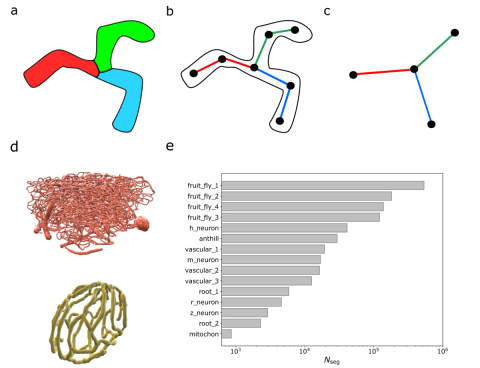
A new article by Luka Blagojević and Márton Pósfai has been published in Scientific Reports.
ABSTRACT / Data describing the three-dimensional structure of physical networks is increasingly available, leading to a surge of interest in network science to explore the relationship between the shape and connectivity of physical networks. We contribute to this effort by standardizing and analyzing 15 data sets from different domains. Each network is made of tube-like objects bound together at junction points, which we treat as nodes, with the connections between them considered as links. We divide these networks into three categories: lattice-like networks, trees, and linked trees. The degree distribution of these physical networks is bounded, with most nodes having degrees one or three. Characterizing the physical properties of links, we show that links have an elongated shape and tend to follow a nearly straight trajectory, while a small fraction of links follow a winding path. These typical node and link properties must be reflected by physical network models. We also measure how confined a link is in space by comparing its trajectory to a randomized null model, showing that links that are central in the abstract network tend to be physically confined by their neighbors. The fact that the shape and connectivity of the physical networks are intertwined highlights that their three-dimensional layout must be taken into account to understand the evolution and function of physical networks.
You can read the article here.